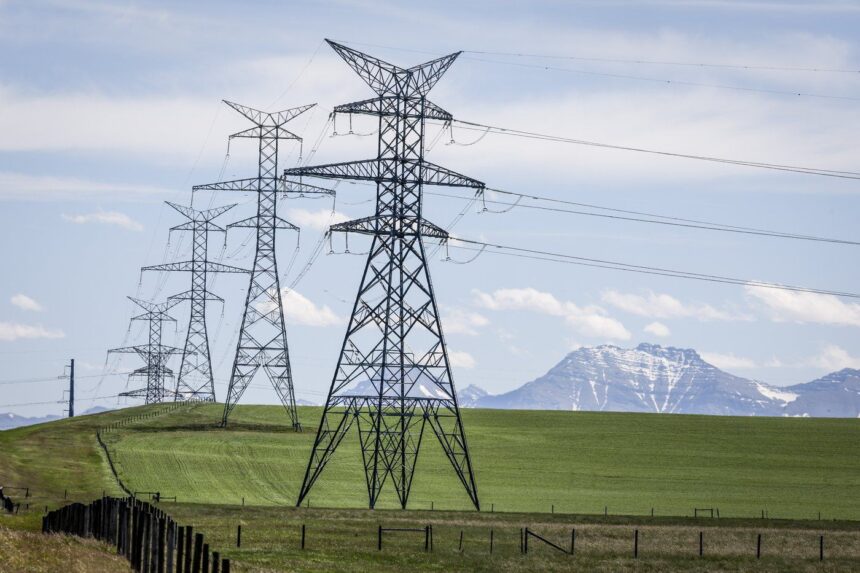I hadn’t expected to find myself in a windowless conference room in Saskatoon on a brilliant June morning. Outside, the prairie sun warmed the Saskatchewan landscape while inside, amid fluorescent lighting and coffee urns, power utility executives spoke in increasingly urgent tones about a crisis few Canadians have heard about.
“We’re facing a retirement cliff,” said Marianne Burke, operations director at SaskPower, gesturing toward a slide showing nearly 30% of their electrical workforce approaching retirement age. “And we simply don’t have enough young people entering the trades to replace them.”
As I looked around the room, the demographic reality was obvious – mostly male, mostly over 50, mostly nodding in worried agreement. The faces of Canada’s power sector leadership reflected both the problem and why it’s been so difficult to solve.
This skills gap threatens to undermine Canada’s ambitious climate goals and economic plans at precisely the moment when our electrical infrastructure needs massive expansion. With the federal government’s Clean Electricity Regulations mandating a net-zero electricity grid by 2035, and provincial governments scrambling to attract battery factories and clean tech manufacturing, the humans who actually build and maintain our power grid have never been more important.
“We need to double our electricity infrastructure in the next decade,” explains Francis Bradley, CEO of Electricity Canada, the national industry association. “That means at least 58,000 new workers across the electricity sector by 2030. Right now, we’re not even close to meeting that demand.”
The numbers are stark. According to Electricity Human Resources Canada, nearly 25% of power workers will retire in the next five years. Yet apprenticeship registrations in power-related trades have declined by almost 8% since 2019, based on Statistics Canada data.
At the Burnaby substation in metro Vancouver, I met Elena Ramirez, one of the few women working as a high-voltage technician in British Columbia. Dressed in arc-flash protective gear and climbing equipment, she explained how she entered the field after a career change at 32.
“I was working in healthcare administration and felt stuck,” Ramirez told me, adjusting her safety helmet. “A friend mentioned the power sector had great pay and benefits. I had no idea how to break in, but BC Hydro had this women in trades program that changed everything for me.”
Ramirez now earns over $120,000 annually in a job with pension benefits and regular hours – a fact she wishes more young people understood. “My niece had no idea these jobs exist,” she said. “We’re so focused on telling kids to code that we’ve forgotten to tell them about the critical infrastructure jobs that literally keep the lights on.”
The recruitment challenge runs deeper than awareness. Canada’s power grid was largely built between the 1950s and 1980s, with few major expansions since. That created a generational gap in the workforce, with fewer mid-career professionals to mentor new entrants.
“You don’t just hire an electrical engineer fresh from university and put them in charge of transmission system planning,” explains Dr. Maryam Mehrtash, professor of electrical engineering at the University of Calgary. “This work requires years of institutional knowledge transfer. When you lose that continuity, mistakes happen – and in our business, mistakes can mean blackouts.”
The problem is particularly acute in rural and Indigenous communities. In Northern Manitoba, where Manitoba Hydro operates some of Canada’s largest hydroelectric facilities, Indigenous communities have historically provided labor for construction but remained underrepresented in permanent technical and professional roles.
Noah Beardy, a Cree electrician from Fox Lake Cree Nation who helped build the Keeyask Generating Station, believes the solution must include stronger partnerships with Indigenous communities.
“Our people have built these dams on our traditional territories for generations, but mostly as temporary workers,” Beardy said when I interviewed him at a coffee shop in Thompson. “Now utilities need us more than ever, and that gives us leverage to demand better training programs, better career paths, and more ownership.”
Some innovative solutions are emerging. The Distributed Energy Resources Technician program at Nova Scotia Community College was created in direct response to utility workforce needs. Its first graduating class in 2023 had a 100% employment rate, with starting salaries averaging $75,000.
“We had students with job offers before they finished their first semester,” said program coordinator Jamie Forsyth. “The demand is that high.”
Meanwhile, Ontario’s Independent Electricity System Operator (IESO) has launched a first-of-its-kind mobile training unit that brings power grid simulators to remote and Indigenous communities.
“You can’t expect someone from a northern community to move to Toronto for two years of training,” explained IESO workforce development manager Sophia Williams. “We need to bring the training to the communities where workers already live.”
These initiatives, while promising, remain small compared to the scale of the challenge. According to Environment and Climate Change Canada, meeting our 2035 clean electricity targets will require over $100 billion in grid investments – but the worker shortage could delay projects by years and drive up costs by billions.
For Burke at SaskPower, the solution must include changing perceptions about careers in electricity. “These are climate jobs,” she emphasized. “If you want to make a difference in fighting climate change, building and operating a clean electricity grid is one of the most impactful things you can do.”
When our conference session ended in Saskatoon, I stepped outside into the prairie sunshine. Overhead, high-voltage transmission lines hummed with electricity – invisible infrastructure we all depend on but rarely notice. Like the workers who maintain it, the grid itself remains largely out of sight and out of mind until something goes wrong.
As Canada embarks on the most significant electricity transition since the mid-20th century, finding, training and retaining the next generation of power workers may be the most overlooked challenge in our climate change response. The future of our grid – and our clean energy ambitions – depends on solving it.






